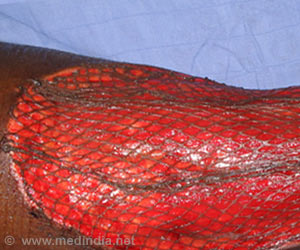By understanding how skin develops, the scientists can repeat the process and regenerate skin, this concept is being studied in this study.

‘P63 was found to be responsible for switching on at least 520 genes and igniting numerous critical signaling pathways, including the "Wnt" pathway (responsible for hair follicle formation), the "Eda" pathway (critical for the formation of hair follicle, sweat glands and teeth) and the "Notch" pathway (responsible for promoting stem cells to differentiate into the epidermis.). This process was kick-started earlier than previously believed and impacted thousands of regions of the genome that govern skin and limb formation.’





Thousands of people undergo skin grafts each year to heal burns, birth defects or wounds. Medical advancements, including the advent of stem cell therapy which uses the patient's own skin cells to grow new skin, have improved skin transplants. But replacement skin often lacks important features like hair follicles, sweat glands or nerve endings. "Skin is an incredibly complex system and the regeneration we are doing now is not even close to duplicating it," said Yi, an associate professor of Molecular, Cellular and Developmental Biology. "The overarching goal is to someday be able to regenerate fully functional skin, and to do that; we have to know, fundamentally, what happens at the beginning."
For the study, Yi and postdoctoral associate Xiying Fan used state-of-the-art genomic tools and DNA sequencing techniques to observe what happens inside embryonic progenitor cells of mice as they coordinate to form skin.
The study focused on a transcription factor, a type of protein that can read genetic information from the genome, called p63, found mostly in skin cells and long-known to play a critical role in skin formation. Previous studies have shown that mice born without p63 have no skin and malformed limbs. Humans with p63 mutations often have cleft lips or other malformations of the teeth and skin. In adults, loss of p63 function is associated with metastatic cancer.
"We have known for a long time that this transcription factor is probably the most important for skin development. What we have not known is what it does," said Yi.
Advertisement
They found that P63 was responsible for switching on at least 520 genes and igniting numerous critical signaling pathways, including the "Wnt" pathway (responsible for hair follicle formation), the "Eda" pathway (critical for the formation of hair follicle, sweat glands and teeth) and the "Notch" pathway (responsible for promoting stem cells to differentiate into the epidermis.)
Advertisement
"Our study provides mechanistic insights into the critical role of p63 at the onset of skin development and reveals a molecular basis for explaining how p63 mutations in humans can cause so many skin diseases," said Yi.
He stresses that the study was in mice and further studies using human cells are needed.
But, if replicated, the findings could help researchers develop new prenatal tests and treatments for skin-related birth defects.
The research could also inform the development of methods to coax adult cells to behave more like embryonic ones and generate fully functional skin.
"Instead of just grafting a piece of skin to cover your body, you could regenerate it as if it were going through development for the first time," he said.
Source-Eurekalert













